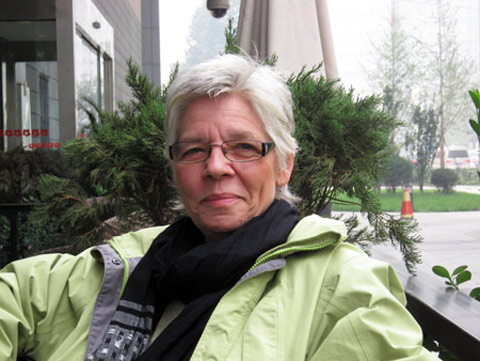
I have been writing for four decades and have been an activist even longer. The two are very connected. My day jobs have included current affairs television production, teaching (creative writing at UBC, journalism at Ryerson, any number of workshops), and for a time I wrote policy papers for arts councils, arts groups and governments. One early assignment turned into my first book, Who’s Afraid of Canadian Culture? published in 1976.
Born and raised in Toronto, I studied art history at university and spent several years studying in France and Italy before returning to Canada in 1970 in the middle of the October Crisis. I’d been living in the 16th century for some time, and awoke to student demonstrations on the York University campus in favour of Trudeau’s invocation of the War Measures Act.
Instead of returning to the art world, I started freelancing for indie magazines (Broadside, This Magazine, Canadian Forum) and the CBC, and ended up working with a bunch of artists organizing a union for visual artists called Canadian Artists’ Representation (CAR/FAC). Most particularly, I spent time with London area artists Jack Chambers, Greg Curnoe and John Boyle. It was Jack who sent me to my first meeting on copyright reform — a subject I was to follow on behalf of writers and creators until 2006.
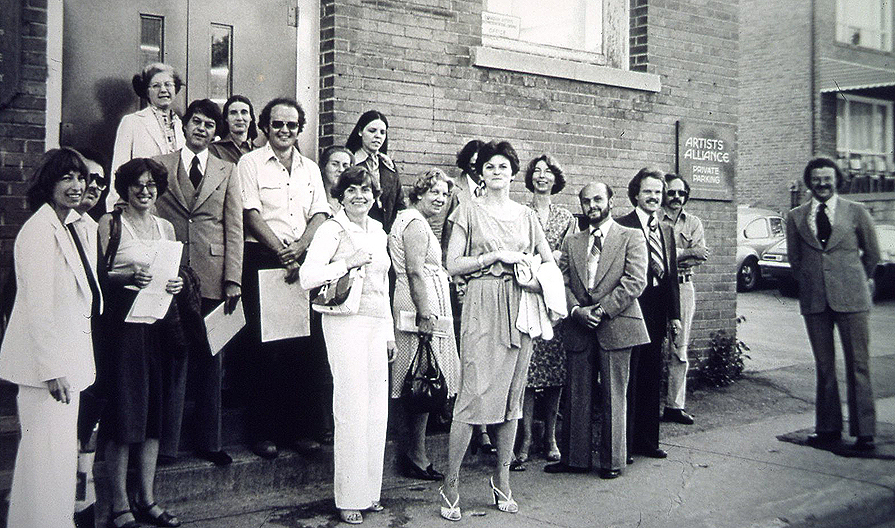 Gathering of CAR/FAC artists and supporters prior to attending the Annual Meeting of the Art Gallery of Ontario, 1974. From left: Barb Hall, Larry Haiven, Judy Haiven, (?), Tom Hendry, Jay Macpherson, Allan Sparrow, Jane Condon, Susan Crean, (?) Madeleine McDowell. Front row: (?), (?), Judy Gouin, Charlie Pachter, Bill Boyle, (?), John Boyle. Photo by Marion Lewis.
Gathering of CAR/FAC artists and supporters prior to attending the Annual Meeting of the Art Gallery of Ontario, 1974. From left: Barb Hall, Larry Haiven, Judy Haiven, (?), Tom Hendry, Jay Macpherson, Allan Sparrow, Jane Condon, Susan Crean, (?) Madeleine McDowell. Front row: (?), (?), Judy Gouin, Charlie Pachter, Bill Boyle, (?), John Boyle. Photo by Marion Lewis.
The seventies were a heady time; a lot of theatre companies, artist-run galleries and publishing houses were set up then, many of them collectives. These were also the years when the Canadian film and recording industries were kick-started. Who’s Afraid of Canadian Culture documented much of this activity and argued for cultural funding that would favour Canadian work to counterbalance the overwheming flood of imported American films, TV and books. Our generation of Canadian artists refused to leave Canada in order to work as our predecessors had, but staying home implied setting up the infrastructure and policies to produce and distribute Canadian work. Little existed at the time, and what did exist (the opera, the ballet, regional theatre, symphony orchestras) demonstrated little interest in contemporary Canadian work. At the time, excellence and Canadian were rarely used in the same sentence by arts professionals, which once prompted my remark that excellence was perhaps something best experienced in the privacy of one’s own home if it’s all a matter of subjective opinion and personal taste. The book was reviewed from coast to coast which is to say, given air time and some serious responses along with a chorus of boos, that led to more radio interviews and TV appearances. Damning reviews appeared in the financial sections pages. I was accused of hating Mozart, of knowing nothing, of possessing the brains of a barn owl, and was censored on CBC Radio’s flagship current affairs show As It Happens, which objected — and excised the term “American cultural imperialism” which I used more than once in a phone-in interview. It was a great way to begin.
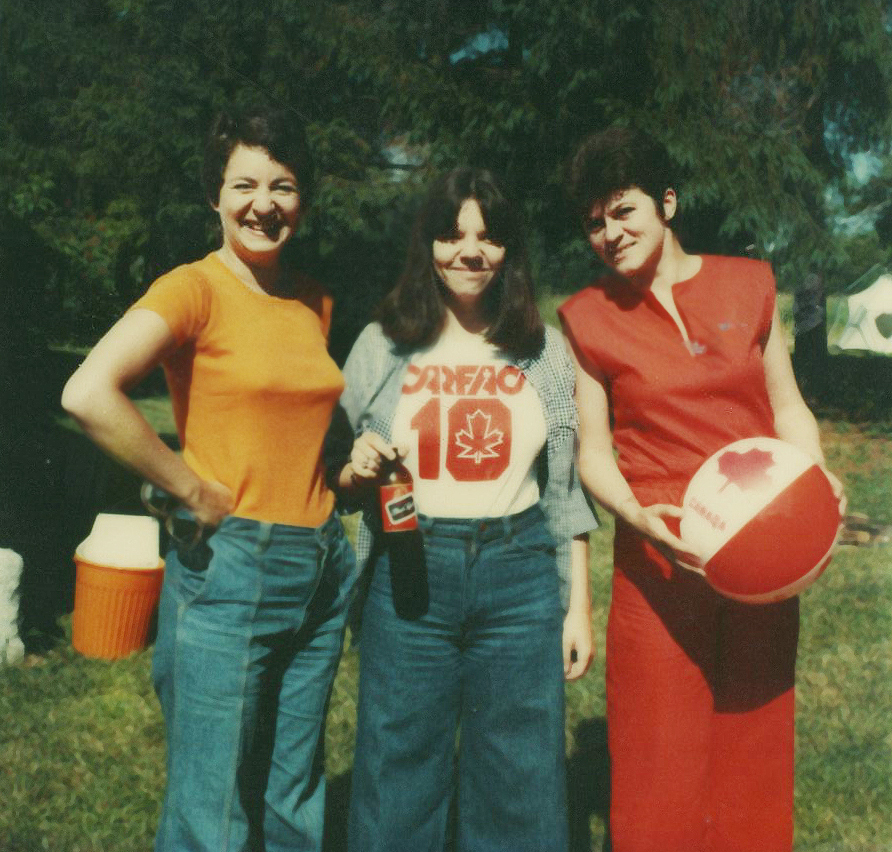
at Charlie Pachter’s farm.
Oro-Medonte, July 1, 1978. Polaroid by C. Pachter.
The second major book project I undertook was about women and journalism, called Newsworthy — the Lives of Media Women. I focused on the careers of contemporary women working in print, television and radio, and included a number of individual profiles. Lise Bissonnette (then editor-in-Chief, Le Devoir ), Denise Bombarier (host of Noir sur Blanc), veteran writer/journalists, Christina McCall and June Callwood, on-air journalist/hosts Adrienne Clarkson, Barbara Frum, and Jan Tennant.
Through the women’s movement I encountered the labour movement. I joined the editorial collective of This Magazine when Madeleine Parent and her husband Kent Rowley were still active (co-founders of the radical Confederation of Canadian Unions). Along with Mel Watkins, Ian Adams, Danny Drache, Sue Vohanka and Rick Salutin. (Contributing editors included: Margaret Atwood, Myrna Kostash, Laurell Richie and Rosemary Sullivan.) I wrote about cultural politics and feminism and edited the Female Complaints column which featured a different writer each issue. The list began with Timothy Findley (who offered) and was followed by a long list of women, a selection of whose pieces were collected in Twist & Shout – a Decade of Feminist Writing in This Magazine, published in 1992. (Alison Dickie Armstrong, Dionne Brand, Maggie Helwig, Susan Riley, Judy MacDonald, Thelma McCormack, and Joyce Nelson. Alison, Joyce and Judy were mainstays on the magazine’s editorial committee. Judy later become editor.)
I got to know CUPE president Grace Hartman after she retired and became involved with the SCM Bookroom. It was Grace who hosted the launch there for my book on the child custody wars, In the Name of the Fathers. What had begun as a feature for Toronto Life on the changes to the Ontario Family Law Reform Act had quickly became something larger — a story about the shift in focus in disputes between parting couples from the cause of the marital breakdown to the custody of children afterwards. With that came the emergence of militant fathers’ rights groups who seemed convinced the courts were favoring women. I was very wary of the reaction to the book, having been seriously warned to de-list my phone number and put bars on my windows. When we had word one militant men’s group was planning to attend the launch, we made sure we knew what to do if debate got fractious. But, in the end, figured the event was in good hands with Grace Hartman in charge of the mike, whatever happened. (In the end, that was nothing much.)
Some books happen to you. Jim Lorimer suggested I write a book about Canadian culture as an underground culture in its own country. This became Who’s Afraid of Canadian Culture? The Grace Hartman biography was suggested, that it I was asked to take the project on by CUPE, a project put together by Louise Leclair. I’d always wanted to write about workers and union organizers, so I welcomed the chance. A Woman for her Time came out at CUPE’s biennial convention in Montreal in 1995 — smack in the middle of the second referendum on Quebec independence when the streets were full of people and politics.
At the time of the first referendum in 1980 I was writing a book with Marcel Rioux, the noted Quebec sociologist and indépendentiste. This project evolved from a sustained conversation between the two of us over several months, and was really two books. Deux Pays pour Vivre — un Plaidoyer and Two Nations, an essay on culture and politics in a world of American pre-eminence were written simultaneously in both official languages. Neither was a translation of the other, so the texts differ slightly. The English version is longer.
Once I began publishing books I joined The Writers’ Union where I continued working on copyright as chair of the electronic rights/copyright committee. I helped set up the Creators’ Copyright Coalition in the early 2000s, and was a founding co-chair (Canada) of a national coalition of artists’ unions and collectives called the Creators’ Rights Alliance/Alliance pour les droits créateurs. The other co-chairs were Michel Beauchemin (Quebec) and the late Greg Younging (Indigenous Peoples). For some years The CRA/ADC represented Canadian creators at meetings of international organizations as World Intellectual Property Organization, the World Trade Organization and the UN where treaties and conventions affecting artists’ rights and the collective rights of Indigenous communities in traditional knowledge are negotiated and housed. These include the TRIPS Agreement covering trade-related aspects of intellectual property rights affecting individual creators.
Writing and social justice naturally led to PEN, the organization that works for the release of imprisoned writers around the world. When PEN Canada reorganized in the 80s, I took on chairing the Writers in Prison Committee and arranged for an exhibition of Native women’s art at the Harbourfront Gallery during the International PEN Congress held here and Montreal in 1989. The show Changers: A Spiritual renaissance was curated by Maliseet artist Shirley Bear; over six hundred people attended the opening, and the show toured nationally. That very day, Marta Kumsa, who’s been kept in jail in since 1980 was miraculously released.
In 1989, I moved to Vancouver to take up a short-term position as the Maclean-Hunter Chair in Creative Non-Fiction at University of British Columbia’s Creative Writing Department. I stayed on in B.C. for ten years, spending a good part of my time on Gabriola Island, a twenty minute ferry from Nanaimo, on Vancouver Island..
Shirley Bear and I collaborated on several projects in the late mid 1990s after she too settled in Vancouver. Most significant was the performance piece we created called Dear Sophie / Dear Emily based on letters and journals written by Emily Carr and Sophie Frank, a Salish basket maker who knew Carr for thirty years. It was first performed at the Vancouver Art Gallery in 1996, and evolved into a catalogue essay, “The Presentation of Self in Emily Carr’s Writings” for the Carr exhibition New Perspectives on a Canadian Icon organized by the National Gallery and the Vancouver Art Gallery in 2006.
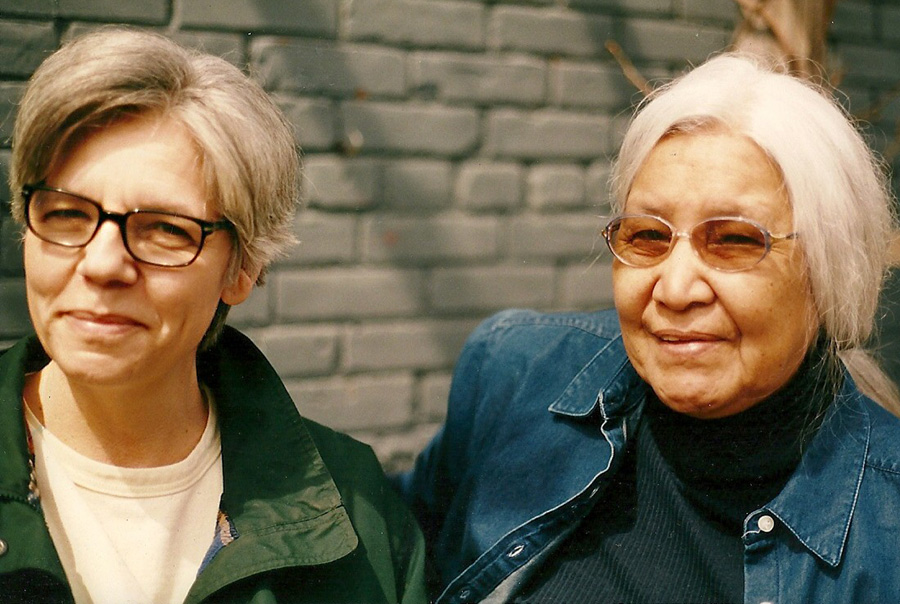
When the Beaverbrook Art Gallery mounted a retrospective of Shirley’s work in 2009 called Nekt wikuhpon ehpit (Once there lived a woman), The Painting, Poetry and Politics of Shirley Bear, I wrote an essay on her writings for the catalogue titled “N’tow’wik’hegat (She who knows how to make images)”. There I mention her strategy of insinuating Maliseet into mainstream English, and note that my long association with her has made me familiar with two dozen or so words in her language. Many more words than I know in Gaelic, by comparison, the language of my great-grandparents.
While living in British Columbia during the nineties I researched and wrote The Laughing One — A Journey to Emily Carr. The book is an exploration of Carr’s legacy in the context of history, which is to say the historical relationship of the incoming Europeans with the first peoples and their differences over the matter of land. As the landscape was Carr’s subject as a painter, her trips to Haida Gwaii, and the Skeena River were formative, taking her to Native villages and territories where she encountered the magnificent poles, and carved doorways of the Haida and Gitksan. These were part of the landscape, and became a theme in Carr’s paintings. But what did these images mean in terms of culture exchange? Especially given their contribution to the appeal of Carr’s work to private collectors and curators at the National Gallery which mounted the 1927 exhibition featuring West Coast Art, “Indigenous and Modern”. The exhibition brought her to National attention, and sales of her work. However, the endorsement did not dispel, much less resolved, the dilemma. Carr and her patrons (which included the Group of Seven) saw Native artifacts as relics of a disappearing people, thinking of them as ‘ancient’ motifs that could be used to form the basis of authentically Canadian contemporary art. They both romanticized and co-opted First Nations culture and art, assuming they were serving the future and honoring Indigenous culture.
History and subsequent generations have thought otherwise, and Carr remains a controversial figure. Yes, she was more open to Indigenous culture than most white European Canadians at the time, and indeed, she was adventurous in her travels to remote communities. But it is still hypocritical to claim her as a national icon without addressing the appropriation involved; when land claims have yet to be settled and there are still Indigenous communities living without basic amenities.
Research for the book included several trips to Indigenous communities on the NorthWest Coast that Carr knew : Villages on Haida Gwai and along the Skeena River. Through Shirley Bear I met the late Haida carver, Freda Diesing, who was part of the Changers exhibition in 1989. When I called Freda to see if I could see her when I visited the area she offered to show me her poles. I assumed she was referring to the ones she’d carved at Kitsimkalem and two other local sites. In fact she meant all the poles east of Prince Rupert along the Skeena and up to Gitanyow and Kispiox which had meant something to her as a late -blooming artist. She learned from those who had gone before.
Freda was one of my travel companions, and Shirley another. It was Shirley I tagged along with one time when she went to stay with Diane and Dull Browne in Skidegate on Haida Gwai. Shirley was the First Nations’ Advisor and artist-in-residence at Emily Carr College of Art and Design in Vancouver at the time. Diane was a local contact everyone knew, so we stayed in her basement and spent time together, as Shirley has come to speak with elders about their work, about the language coming back among the younger generation, their access teachers and college courses. I wrote about both trips and both women in the book.
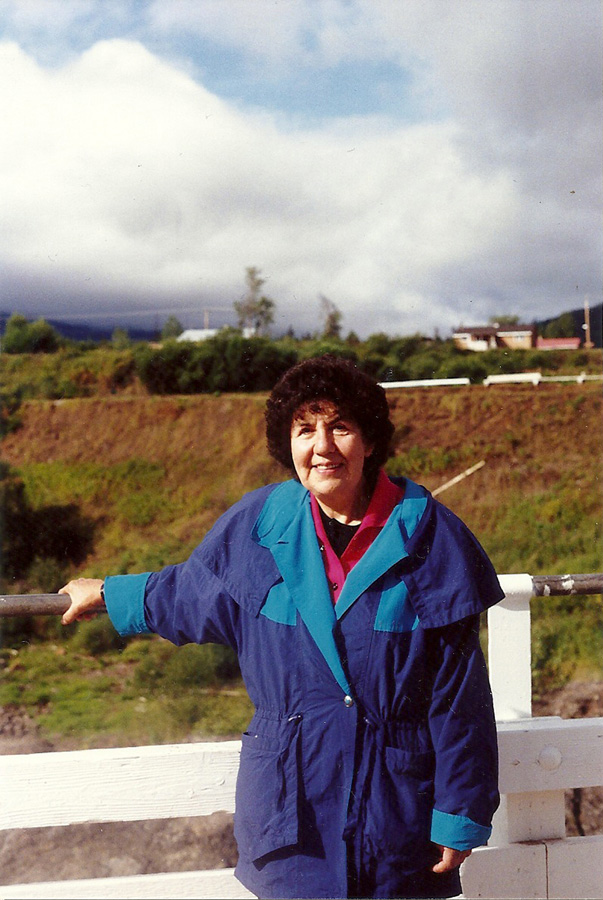
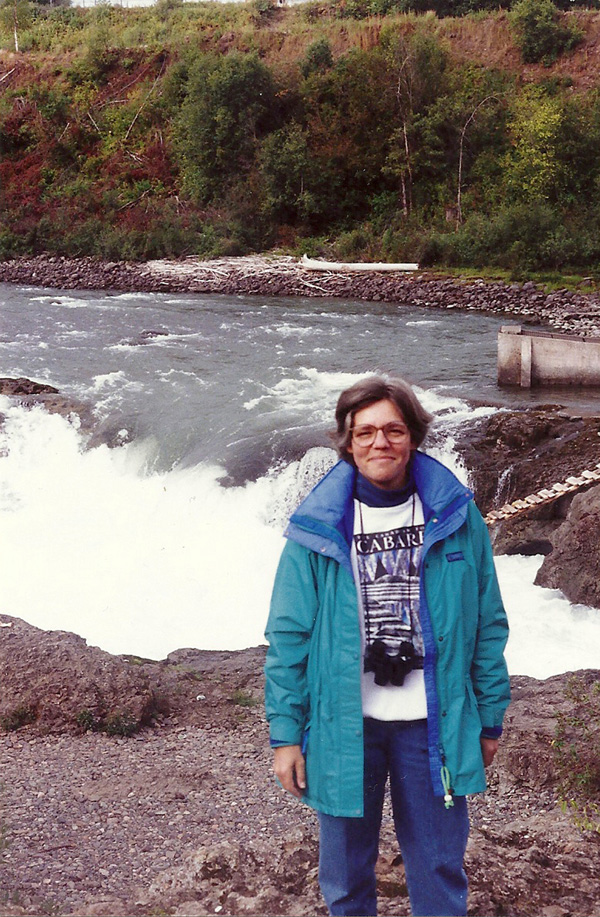
Following publication of The Laughing One, I felt it was time the unpublished portions of Carr’s journals, plus other sections expunged from her writings, see the light of day. The result was Opposite Contraries—the Unknown Journals of Emily Carr.
My most recent book, Finding Mr. Wong was released in 2018. Like other major book projects it took several years to research and write. This one included a trip to County Roscommon in Ireland, and two trips to Guangdong, China. It is the story of Wong Dong Wong an orphan who came to Canada in 1911 at the age of sixteen, brought by his uncle who paid the $500 head tax charged the Chinese for entering Canada, the equivalent cost of two commercial lots in downtown Vancouver at the time.
Mr. Wong moved east to Toronto in 1917 and was hired as a live-in domestic cook by my grandfather in 1928. He remained in the job until the mid sixties when he retired and moved to Chinatown. Thus I grew up in Mr. Wong’s kitchen, and as a small child, assumed everyone had a Wong along with a Gran and a Gramp.
The other side of the equation was my grandfather, Gordon Crean. The son of Irish immigrants, Gramp married my grandmother late in life, and was forty-five when his first son was born. He admired Mr. Wong and the respect was mutual, so much so that when he died in 1947, it was Mr. Wong he asked to look after my grandmother. Finding Mr. Wong was written as a biography comprising memoir, history and journalism.
Like many activists, I work with communities, serve on boards and committees, and go to demonstrations. Most recently I’ve been on the board of Native Earth Performing Arts. During the fall of 2011, I had the privilege of being the third writer-in-residence at historic Joy Kogawa House in Vancouver. It was at Kogawa House that I began writing Finding Mr. Wong.